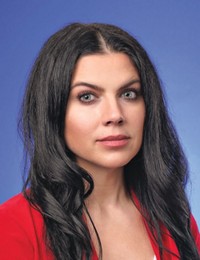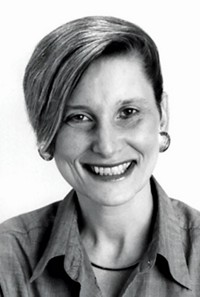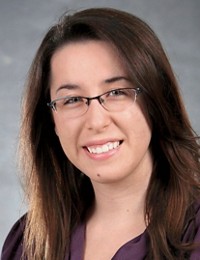Advertisement
Grab your lab coat. Let's get started
Welcome!
Welcome!
Create an account below to get 6 C&EN articles per month, receive newsletters and more - all free.
It seems this is your first time logging in online. Please enter the following information to continue.
As an ACS member you automatically get access to this site. All we need is few more details to create your reading experience.
Not you? Sign in with a different account.
Not you? Sign in with a different account.
ERROR 1
ERROR 1
ERROR 2
ERROR 2
ERROR 2
ERROR 2
ERROR 2
Password and Confirm password must match.
If you have an ACS member number, please enter it here so we can link this account to your membership. (optional)
ERROR 2
ACS values your privacy. By submitting your information, you are gaining access to C&EN and subscribing to our weekly newsletter. We use the information you provide to make your reading experience better, and we will never sell your data to third party members.
Environment
Committee On Science
Technology tools are key to moving national meeting content beyond the meeting rooms
by Rachel Petkewich
March 12, 2007
| A version of this story appeared in
Volume 85, Issue 11
The ACS Committee on Science has a very broad purview, just as science itself does. Better known as ComSci, the committee is composed of a diverse crew of chemical science and engineering gurus who hail from industry, academia, and government.
Traditionally, ComSci's activities have centered on sponsoring or cosponsoring programming at ACS national meetings. For example, it cosponsored four programs at the fall 2006 meeting in San Francisco: symposia honoring Percy Julian and Richard Smalley, the H. C. Brown Legacy Symposium, and "Equipping the 2015 Chemical Technology Workforce Initiative."
ComSci will continue to develop program content, says Carolyn Ribes, ComSci chair and a process analytical chemist for Dow Benelux BV in the Netherlands, but "we are trying to move beyond just doing programming at national meetings." Moving past a single venue would help reach an audience of chemists in ACS as well as people in many different parts of the public, and, Ribes says, "We are looking for ideas on how to best do that."
ComSci will start participating in Web-posting experiments at the upcoming national meeting in Chicago. For example, ComSci will support ACS President Catherine T. Hunt's symposia on sustainability. At a unique luncheon replete with organic, locally grown food, each table of participants will answer questions on sustainable energy, water, and food rather than just listening to a traditional speaker. Ribes says the plan is to record the conversations and post summaries on the ACS president's new website (acspresident.org). Organizers hope the result will be "a great way to take national meeting work beyond the national meeting," Ribes says.
COMMITTEE ON SCIENCE AT A GLANCE
Chair
Carolyn Ribes, Dow Benelux BV
Committee Website
Membership
16 members (five are elected by technical divisions), nine associates, one consultant, one ACS staff liaison, and two committee liaisons
Classification
Joint Board-Council Committee
Subcommittees
Forces & Trends, Policy, Scientific Advancement & Advisement
Inception
Established by ACS Council in 1981
For the fall meeting in Boston, the committee is considering sponsorship of two events that would also incorporate Web features. The first event is an interactive lunch session about the ethics and implications of genetic testing tentatively titled, "Genetic Screening: Do You Really Want To Know?" Ribes notes that the committee has thought about bringing in a couple of experts in a point-counterpoint format followed immediately at the meeting by a general discussion and then later by posting a synopsis on ComSci's website.
The second Boston event that ComSci is planning is a symposium about creating and sustaining global research collaborations. "There's been a lot of talk, of course, about how important it is to be a global player and be able to reach across the world for your partnerships, but I think people need to understand how to do that successfully, what are good models, and what are good tools to make that work," Ribes says.
Members of ComSci are geographically diverse, so they routinely communicate via e-mail or conference calls and convene in person twice a year at national meetings. Members and associates of the committee are selected for their expertise and confirmed by the ACS president and the board chair, taking into consideration recommendations from the Committee on Committees. Five members are chosen by the 33 ACS technical divisions in special elections.
Committees periodically reevaluate their missions. When William R. Oliver, a professor at Northern Kentucky University, was chair of ComSci last year, ComSci updated its mission to concentrate its attention on new and developing areas in science. Oliver presented this streamlined mission as part of the committee's report to ACS Council at the national meeting last September. ComSci's three subcommittees currently reflect these areas.
The Subcommittee on Scientific Advancement & Advisement aims to identify new horizons for the science of chemistry and to make recommendations for its advancement.
The ComSci subcommittee called Forces & Trends focuses on understanding the changing social, economic, professional, and disciplinary environment in which chemical sciences are practiced.
The Policy Subcommittee examines the scientific basis of public policies related to the chemical sciences and makes recommendations to the appropriate ACS units, for example, the ACS Board or the ACS Office of Legislative & Government Affairs.
"In the areas of scientific advancement and policy and globalization forces and trends, I want us to focus on some key issues and come up with some ways of delivering information or causing change that will have an impact," Ribes states. She wants to make tangible progress with science policy, perhaps by identifying issues that the board of directors can address in a policy statement.
Ribes encourages members of the community to contribute their ideas to ComSci at comsci@acs.org. "I'm also looking at what technology tools allow us to reach a broader audience," Ribes says. With the goal of involving more ACS members who can't attend scientific sessions, Ribes hopes to soon take advantage of a more substantial ComSci website and, over the next few years, ACS Web Presence. ComSci's next open meeting will be held on Saturday, March 24, 11 AM to 5 PM, at the Sheraton Chicago Hotel & Towers.






Join the conversation
Contact the reporter
Submit a Letter to the Editor for publication
Engage with us on Twitter